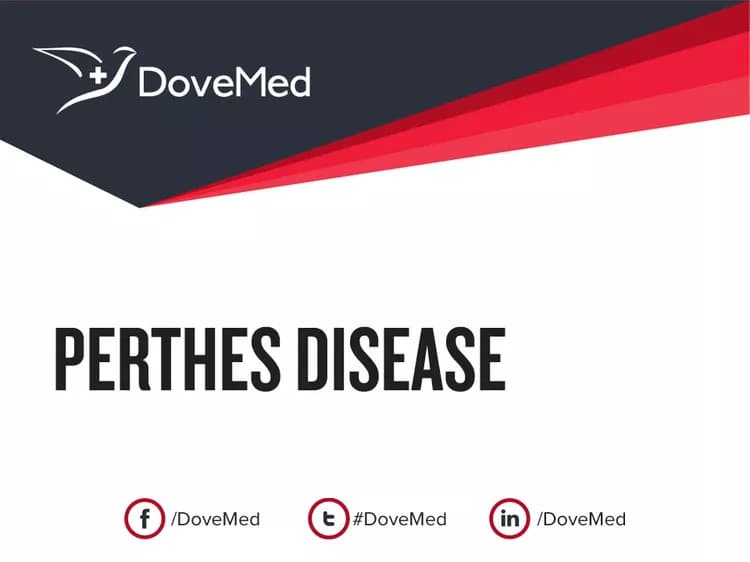What are the other Names for this Condition? (Also known as/Synonyms)
- Coxa Plana
- LCPD (Legg-Calve Perthes Disease)
- Legg-Calve Perthes Disease (LCPD)
What is Perthes Disease? (Definition/Background Information)
- Perthes Disease (or Legg-Calve Perthes Disease) is a rare, but painful condition that develops in childhood, when blood supply to the ball portion of the hip joint (the femoral head) is temporarily disrupted
- Without sufficient supply of blood, the hip joint dies causing severe irritation and inflammation
Who gets Perthes Disease? (Age and Sex Distribution)
- Perthes Disease may occur in children of any gender, race, and ethnic group. However, Caucasian, Asian, and Eskimo children are at a higher risk
- Boys, between the ages of 4 and 10 years, have the highest rate of incidence
What are the Risk Factors for Perthes Disease? (Predisposing Factors)
Common risk factors associated with Perthes Disease include:
- Children between the ages of 4-8 years old
- Boys are more likely to develop this condition, than girls, in a 5:1 ratio
- Family history of Perthes Disease
It is important to note that having a risk factor does not mean that one will get the condition. A risk factor increases ones chances of getting a condition compared to an individual without the risk factors. Some risk factors are more important than others.
Also, not having a risk factor does not mean that an individual will not get the condition. It is always important to discuss the effect of risk factors with your healthcare provider.
What are the Causes of Perthes Disease? (Etiology)
- The underlying cause of Perthes Disease is unknown
- However, it is thought to be a blood vessel problem, linked to a temporary disruption of blood supply to the ball portion (at the growth plate) of the hip joint
- As a result of the inadequate blood flow, necrosis (tissue death) of the femoral end occurs
What are the Signs and Symptoms of Perthes Disease?
Signs and symptoms of Perthes Disease include:
- Pain within the hip, knee
- Pain in the thigh and groin
- Disproportionate leg length
- Reduced range of motion within the hip, difficulty walking
- Stiffness of the hip
How is Perthes Disease Diagnosed?
Diagnostic methods that a physician may use to help diagnose a Perthes Disease include:
- Physical examination: Testing a child’s range of motion in specific positions, to locate pain, is a common technique used
- X-ray: A physician may order several x-rays to follow the progression of this condition, if the initial x-ray is negative
- Magnetic resonance imaging (MRI): An MRI is a more detailed scan that uses radio waves and a magnetic field, to produce images that allow a physician to view any visual damage to the bones
- Bone scan: A bone scan is a diagnostic method used to identify any bone abnormalities by injecting tiny amounts of radioactive material, into the bloodstream
Many clinical conditions may have similar signs and symptoms. Your healthcare provider may perform additional tests to rule out other clinical conditions to arrive at a definitive diagnosis.
What are the possible Complications of Perthes Disease?
Complications of Perthes Disease include:
- Degenerative joint disease (osteoarthritis)
- Immobilization may be required for a period of 18-24 months
How is Perthes Disease Treated?
The goal of treatment is to maintain the original shape of the femoral head, which helps in proper function of the hip. A physician may recommend nonsurgical treatment measures for children (mainly for those, who are 7 years old or younger), which may include:
- In certain situations, the child may need to avoid applying any pressure/weight to the hip. The use of crutches can provide protection to the hip joint
- A physician may prescribe a padded cast or brace, to hold the femur head within the socket
- Non-steroidal anti-inflammatory oral medications, such as indomethacin and naproxen, may be used to treat a Perthes Disease. These medications can help decrease pain and swelling
- Physical therapy exercises that include stretching and strengthening may help retain the hip flexibility
Surgical treatment measures:
- Osteotomy: Osteotomy is a surgical procedure that involves cutting and relocating the bone of the hip joint. Orthopedic implants, such as screws, wires, and plates, may be used to stabilize the repositioned joint
- Tenotomy: Tenotomy is a surgical procedure that involves releasing a shortened atrophied muscle
How can Perthes Disease be Prevented?
Unfortunately, there are no available preemptive methods, to prevent Perthes Disease. However, if diagnosed and aggressively treated early, the signs and symptoms may improve.
What is the Prognosis of Perthes Disease? (Outcomes/Resolutions)
- The prognosis of Perthes Disease, depends on the severity of the child’s condition
- Children below 6 years, usually have more successful outcomes and higher probability of a full recovery
- Children over 6 years, regardless of treatment, are at an increased risk of a hip deformity and arthritic development
Additional and Relevant Useful Information for Perthes Disease:
Arthritis is a joint disorder characterized by an abnormal inflammation that affects one or more joints, within the body. An inflammatory arthritis of the hip affects the joints of the hip; especially the cartilage, bone, soft tissue surrounding the joint, muscles, and tendon.
Related Articles
Test Your Knowledge
Asked by users
Related Centers
Related Specialties
Related Physicians
Related Procedures
Related Resources
Join DoveHubs
and connect with fellow professionals


0 Comments
Please log in to post a comment.